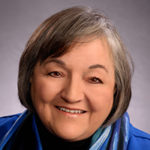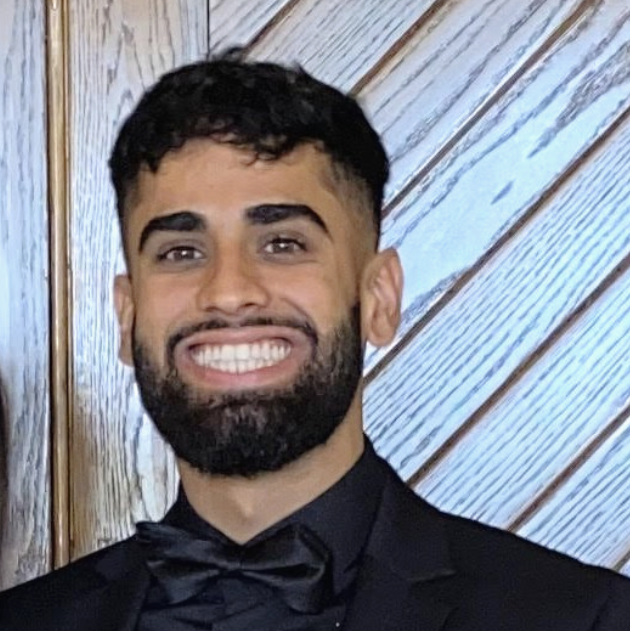Wednesday Agenda
Troubleshooting: Key for collaboration
If a business produces a product that people interact with, users will encounter problems. (A “perfect product” is a myth.) Companies have many tactics for addressing customer problems: service reps, Knowledgebase systems, product documentation, etc. What can happen when all these different silos converge to consider how best to solve customer problems? Can this be a wonderful opportunity for collaboration?
Kristen Eberlein, Eberlein Consulting

Kris is a DITA specialist and chair of the OASIS DITA Technical Committee.
Achieving Greatness Through Multi-Directional Collaboration
When Rocket shifted from centralized to decentralized ID and acquired multiple companies with content in a variety of flavors, collaboration became key to success in applying new strategies and moving all content to new tools. To manage the change and juggle conflicting priorities and demands from multiple business units, we initiated various collaborative efforts to successfully achieve our goals.
Pat Burrows, Rocket Software
 Pat Burrows’ career spans the full arc of our industry from Writer to Consultant to Director. Working in both high tech and scientific industries, Pat has led global teams in content development and information architecture. She has helped multiple organizations “think inside the box” about the creation and delivery of their content, and motivated global teams to deliver future-state results.
Pat Burrows’ career spans the full arc of our industry from Writer to Consultant to Director. Working in both high tech and scientific industries, Pat has led global teams in content development and information architecture. She has helped multiple organizations “think inside the box” about the creation and delivery of their content, and motivated global teams to deliver future-state results.
Early Collaboration Between Design and Content
In this talk, I will present experiences of working as a technical content developer and engaging with designers early in the development cycle to improve the client experience. Emphasis on early collaboration improves our content developers’ understanding of how clients use our documentation. In IBM Systems, our content designers and developers collaborate using user research as part of Design Thinking.
Barbara Neumann, IBM
 Barbara Neumann is a Senior Content Developer and technical editor in IBM Systems. She is a graduate of Vassar College in mathematics, holds an MBA from the University of Rochester. As a Distinguished Toastmaster, Barbara presents on careers, STEM topics and team building at ConVEx, Union College, Vassar College, Marist College, RPI, SUNY New Paltz, and the University of Rochester.
Barbara Neumann is a Senior Content Developer and technical editor in IBM Systems. She is a graduate of Vassar College in mathematics, holds an MBA from the University of Rochester. As a Distinguished Toastmaster, Barbara presents on careers, STEM topics and team building at ConVEx, Union College, Vassar College, Marist College, RPI, SUNY New Paltz, and the University of Rochester.
Reveal Your Value by Building Cross-Functional Partnerships
We have one skill that most people within the software development industry don’t possess – we are good communicators. The fast growth of companies hinders the communication between teams, roles become siloed, and people have limited understanding of each other’s work. By building partnerships with the different cross-functional teams, we can show our value as communicators and become better writers.
Miriana Nedeva, VMware
 My name is Miriana Nedeva and I am a Senior Technical Writer at VMware with over seven years of experience. I graduated from Westminster University, London with a Master’s Degree in International Relations and European Politics and I believe that effective communication is key in every aspect of our lives.
My name is Miriana Nedeva and I am a Senior Technical Writer at VMware with over seven years of experience. I graduated from Westminster University, London with a Master’s Degree in International Relations and European Politics and I believe that effective communication is key in every aspect of our lives.
Collaborative Review and Approval Workflows: A challenge in regulated industries
A multiplicity of tools used across different roles in a company often hampers an Agile release cycle. This is especially true where departments use tools unique to their roles. What are the challenges faced in regulated industries (medical device, life science, finance, transportation, etc.) when it comes to reviewing and approving publications? How do you motivate engagement from non-technical writers?
Dipo Ajose-Coker, Componize Software
 With over 16 years combining languages and IT as a technical writer and editor working in regulated industries (high-end medical devices and finance), Dipo blends his experience of authoring in structured and unstructured environments; migrating technical publications to DITA; and content strategy to help develop a best in class CCMS. Dipo holds an MA in Multimedia and Multilingual Document Design.
With over 16 years combining languages and IT as a technical writer and editor working in regulated industries (high-end medical devices and finance), Dipo blends his experience of authoring in structured and unstructured environments; migrating technical publications to DITA; and content strategy to help develop a best in class CCMS. Dipo holds an MA in Multimedia and Multilingual Document Design.
Towards Social and Semantic Technical Documentation
Today’s Technical Documentation perfectly echoes Web 1.0 as one-way publishing of static textual content, written by humans to be read by humans. But considering the evolution of the Web over the last 20 years and its major shift from static to social and to semantic, what developments can we expect for technical documentation?
Fabrice Lacroix, Antidot Fluid Topics
 Fabrice Lacroix is a serial entrepreneur and a web pioneer. He has been working for 25 years on the development of innovative solutions around search technology, content enrichment, and AI. He is the founder of Fluid Topics, the leading Content Delivery Platform that reinvents how users search, read, and interact with technical documentation.
Fabrice Lacroix is a serial entrepreneur and a web pioneer. He has been working for 25 years on the development of innovative solutions around search technology, content enrichment, and AI. He is the founder of Fluid Topics, the leading Content Delivery Platform that reinvents how users search, read, and interact with technical documentation.
The Semantic Content Hub
The Semantic Content Hub: Ambiguity, language discrepancies, and lack of background information are just a few challenges that organizations face on a daily basis when trying to analyze their content and data. This talk will focus on various semantic modeling methods you can use to organize your unstructured data and the benefits of a comprehensive knowledge graph.
Andreas Blumauer, Semantic Web Company Inc.

Andreas Blumauer has been CEO and managing partner of Semantic Web Company (SWC) for 15 years. At SWC, he is responsible for corporate strategy and strategic business development. Andreas Blumauer has been a pioneer in the field of Semantic AI since 2001.
Harness the Power of Semantic Tagging
Adding structure to your content provides benefits, but to truly make it more intelligent and flexible, you need to harness the power of semantic tagging and taxonomies. Extending your content through powerful metadata will allow you to create, find and deliver content more effectively, and support more sophisticated multi-channel output and personalization.
Maura Moran, Mekon Ltd.
 Maura is a Senior Content Consultant at Mekon, with a focus on content strategy, transformation, and content management. She has over 25 years’ experience helping organizations drive value through improved content practices, including major clients in pharma, manufacturing and publishing sectors. She balances finding the right technical solution with practical implementation, including a solid approach to change management and governance.
Maura is a Senior Content Consultant at Mekon, with a focus on content strategy, transformation, and content management. She has over 25 years’ experience helping organizations drive value through improved content practices, including major clients in pharma, manufacturing and publishing sectors. She balances finding the right technical solution with practical implementation, including a solid approach to change management and governance.
Automatically Categorize and Tag Content Using Semantic AI
While most reliable CMS have their own native tagging & search, these pale in comparison to the benefits you can get with automated tagging based on Semantic AI. This session will introduce the concept of auto classification (semantic concept tagging) which allows users to automatically categorize and tag content with rich descriptors that enable advanced findability of content in search engines and will showcase the successful implementation of Semantic AI in Tridion Docs.
 Florian Bauer, Semantic Web Company Inc.
Florian Bauer, Semantic Web Company Inc.
Florian Bauer is Chief Solutions Officer at the Semantic Web Company (SWC) with the main focus to establish strategic alliances with key partners and create innovative solutions in the area of semantic technologies. He is author of the book “Linked Open Data – The Essentials” and obtained a Master Degree in IT-Management and a Bachelor Degree in Software Engineering.
 Chip Gettinger, RWS
Chip Gettinger, RWS
Chip is VP Global Solutions Consulting at RWS, managing a team who work with customers in maximizing global content with RWS. He has experience working with customers to develop global content strategies, business ROI adoption drivers, change management and technology adoption for component content management systems. He speaks and blogs about customer successes working closely with industry standards, partners and customers in technology solutions and deployments.
How to Scale Video, Like Print and PDF?
Lessons learned: How have various organizations extended their structured content processes to create how-to and training videos at scale? What did it entail for those organizations? What processes stayed in place? What challenges did they face and what changes did they make? To what level could they really reuse their existing content? What did it mean for cross-silo collaboration?
Wouter Maagdenberg, TXTOmedia

Wouter Maagdenberg (1975) Started his first tech company, during his BA studies, and sold his former company Calamares (Media Asset Management) to SDL in 2011. Wouter started TXTOmedia – The Video Automation Company in 2017, in his role as CEO.
Time to Upgrade: Making documentation website accessible for all
Application of interactive Voice Assistant features within documentation portals is still an unexplored area. Integrated and interactive Voice Assistant would help users, especially those with permanent or temporary disabilities, and who want minimum interaction to navigate through the voluminous product related documentation sites. Integration of Voice Assistant enables a seamless experience without the dependency on external Assistive Technologies.
Sowmya Jayakirthi & Usha Rani, VMware
 Sowmya Jayakirthi : A Staff Technical Writer by profession with an experience of 15 years in the industry. I have worked with VMware for the last eight plus years. I have experience working with mainframe technology, hardware and cloud computing services. I am keen on learning, exploring, innovating new technology to improve user experience.
Sowmya Jayakirthi : A Staff Technical Writer by profession with an experience of 15 years in the industry. I have worked with VMware for the last eight plus years. I have experience working with mainframe technology, hardware and cloud computing services. I am keen on learning, exploring, innovating new technology to improve user experience.
 Usha Rani: I have around 13 plus years of experience in the field of Technical Communication. I am currently working as a Manager with the Information Experience team at VMware and leading a team of Technical Writers in Bangalore. My team focuses on End User Computing and Cloud Platform products. I am passionate about learning, simplification, and innovation.
Usha Rani: I have around 13 plus years of experience in the field of Technical Communication. I am currently working as a Manager with the Information Experience team at VMware and leading a team of Technical Writers in Bangalore. My team focuses on End User Computing and Cloud Platform products. I am passionate about learning, simplification, and innovation.
Rich Media, Delivering the Right Amount
This session covers some key considerations while delivering rich media content in documentation. While delivering information for new age products writers are often asked to stress on “showing” rather than “telling”. The session will cover how to focus on customer needs while delivering information through rich media. We will touch upon SaaS as well as On-Premises documentation.
Vaijayanti Nerkar, BMC Software
 Vaijayanti has a professional experience of about 20 years in Documentation and Localization. She has been working with BMC Software in the field of Technical Documentation for over 15 years. Since 5+ years she has been managing the writing teams for SaaS products. Vaijayanti plays a key role in influencing SaaS content strategies at BMC Software.
Vaijayanti has a professional experience of about 20 years in Documentation and Localization. She has been working with BMC Software in the field of Technical Documentation for over 15 years. Since 5+ years she has been managing the writing teams for SaaS products. Vaijayanti plays a key role in influencing SaaS content strategies at BMC Software.
Are You Ready for Content-as-a-Service?
Content as a Service (CaaS) means that you make information available on request. The traditional publishing model is to package and format information into print, PDF, or websites, and make those collections available to the consumer. But with CaaS, consumers decide what information they want and in what format they want it.
Sarah O’Keefe, Scriptorium
 Sarah O’Keefe, Chief Executive Officer, founded Scriptorium Publishing to work at the intersection of content, technology, and publishing. Today, she leads an organization known for expertise in solving business-critical content problems with a special focus on product and technical content. Sarah identifies and assesses new trends and their effects on the industry.
Sarah O’Keefe, Chief Executive Officer, founded Scriptorium Publishing to work at the intersection of content, technology, and publishing. Today, she leads an organization known for expertise in solving business-critical content problems with a special focus on product and technical content. Sarah identifies and assesses new trends and their effects on the industry.
Content Evolution: Past, present, and future
After a brief review of the past few millennia in the history of content development and dissemination, and a closer look at the last few decades, this presentation will draw on current trends in content ops to infer possible future trends. It will conclude with insights on preparing for inevitable changes in how content is created and used.
Tom Comerford, Supratext
 Tom Comerford has worked with content technologies and markup languages for more years than he’ll admit. He has experience in many industries, including manufacturing, financial services, education, and healthcare. He draws on his background in anthropology for insights into content artifacts and the people who create them. His current focus is the automation of DITA customizations.
Tom Comerford has worked with content technologies and markup languages for more years than he’ll admit. He has experience in many industries, including manufacturing, financial services, education, and healthcare. He draws on his background in anthropology for insights into content artifacts and the people who create them. His current focus is the automation of DITA customizations.
Innovative Documentation
As the world embraces Industry 4.0, ‘smart’ factories, and ‘smart’ manufacturing, we need to also move to more innovative documentation. This evolution is Documentation 4.0, and just like Industry 4.0, it has design principles to help the content support the demands of advanced system integration, multi-channel publishing, and the IoT.
Rik Page, Bluestream
 Rik has worked with component content and document management solutions since 2000. During this time, he has worked with custom DTDs and Schemas, S1000D, iSpec2200, and DITA. His practical experience ranges from data capture/content creation to dynamic multichannel delivery in various industries, including banking and finance, manufacturing, central government, and education. Rik has taken part in multiple global consultancy projects.
Rik has worked with component content and document management solutions since 2000. During this time, he has worked with custom DTDs and Schemas, S1000D, iSpec2200, and DITA. His practical experience ranges from data capture/content creation to dynamic multichannel delivery in various industries, including banking and finance, manufacturing, central government, and education. Rik has taken part in multiple global consultancy projects.
From Information Wars to Knowledge Wars
With every new content tool and technology comes the promise that – at long last – content nirvana will be achieved! So a small, but loyal band of followers breaks off from the pack and goes all in, only to find that for all its promise, this new method has the same flaws and shortcomings. Join Michael Iantosca as he explains the Semantic Content Maturity Model (SCMM) and why organizations should strive for an omnisource-omnichannel approach instead of a content tool silver bullet.
Michael Iantosca, Avalara
 Michael Iantosca is the Senior Director of Content Platforms at Avalara Inc. Michael spent 38 of his 40 years at IBM as a content pioneer – leading the design and development of advanced content management systems and technology that began at the very dawn of the structured content revolution in the early 80s. Dual trained as a content professional and systems engineer, he led the charge building some of the earliest content platforms based on structured content. If Michael hadn’t prevailed in a pitched internal battle to develop an XML platform over a planned SGML variant called WebDoc in the mid-90s at Big Blue, DITA, and the entire industry that supports it, might not presently exist. He was responsible for forming the XML team and a member of the workgroup at IBM that developed DITA.
Michael Iantosca is the Senior Director of Content Platforms at Avalara Inc. Michael spent 38 of his 40 years at IBM as a content pioneer – leading the design and development of advanced content management systems and technology that began at the very dawn of the structured content revolution in the early 80s. Dual trained as a content professional and systems engineer, he led the charge building some of the earliest content platforms based on structured content. If Michael hadn’t prevailed in a pitched internal battle to develop an XML platform over a planned SGML variant called WebDoc in the mid-90s at Big Blue, DITA, and the entire industry that supports it, might not presently exist. He was responsible for forming the XML team and a member of the workgroup at IBM that developed DITA.
The World of Dynamic Content
Industry 4.0 advocates (read it forces) dynamic content.
What does it mean to a technical communicator?
It means we must write every day. It means we must build content that is granular and not just context sensitive; microcontent that has a context; omnipresent online, searchable, single-source content. Above all, less content that has to be more.
Anu Singh, Fiserv
 Creative disrupter who believes in the enormity of the human mind, its thoughts, feelings and the social paradigm it creates and coexists in.
Creative disrupter who believes in the enormity of the human mind, its thoughts, feelings and the social paradigm it creates and coexists in.
Anu works in the areas of content development and transformation, agile project management, content strategy and client experiences with a focus on empowering clients in their product adoption journey and enabling their success through content.
Change Management: Lessons from the Herd
Change is hard for anyone, and it’s even more challenging for groups. In this session, you’ll learn about change management from the perspective of one of the world’s most change-averse yet highly adaptable species: the horse. We’ll cover what change management is, why it is important, and how to help your herd transition successfully to your new content ecosystem.
Regina Lynn Preciado, Content Rules, Inc.
 Regina Lynn Preciado is a senior content strategist with Content Rules. She helps companies transform how they organize, manage, and leverage content. Regina works with communicators in marketing, documentation, support, and training — sometimes all at once! Her clients include tier 1 companies in high-tech, life sciences, manufacturing, and financial services. She lives a dogspotting lifestyle.
Regina Lynn Preciado is a senior content strategist with Content Rules. She helps companies transform how they organize, manage, and leverage content. Regina works with communicators in marketing, documentation, support, and training — sometimes all at once! Her clients include tier 1 companies in high-tech, life sciences, manufacturing, and financial services. She lives a dogspotting lifestyle.
Great Resignation: Keeping your team successful
After the initial impact of COVID in 2020, this year has brought an additional challenge to the industry – The Great Resignation. Many companies have struggles to retain and/or hire people, with surveys showing up to 50% of workforce looking to switch jobs. How can a team succeed through this challenge?
Vlad Khanin, NextGen Healthcare
 As a director of user assistance at NextGen, Vlad’s focus is on developing and implementing a content strategy designed around principles of minimalism, user-centered design, and DITA. Vlad led his team through the first year of the pandemic, losing 30% of people and then through the Great Resignation, overcoming multiple constraints, keeping the team focused and successful regardless of challenges.
As a director of user assistance at NextGen, Vlad’s focus is on developing and implementing a content strategy designed around principles of minimalism, user-centered design, and DITA. Vlad led his team through the first year of the pandemic, losing 30% of people and then through the Great Resignation, overcoming multiple constraints, keeping the team focused and successful regardless of challenges.
Right Track to DITA Long-Term Success
Sustainable DITA implementations, where your team delivers on the benefits you sold to management, means that you have to monitor, measure, and adjust, ongoing for optimum outcome. Your authors expect better content development experience, your management expects real return on the investment, and most of all, your customers expect, and deserve, nothing more than the best possible content experience.
Brian Trombley, Ariza Content Solutions
and Sabine Ocker, Omnicell
 Brian has over 35 years experience in helping clients implement content processes and technologies for all aspects of publishing across a wide range of industry verticals. An early practitioner of structured content methodologies, Brian was at the forefront of the SGML and XML revolutions and has helped clients successfully manage change and convert and leverage content for Maximum Business value.
Brian has over 35 years experience in helping clients implement content processes and technologies for all aspects of publishing across a wide range of industry verticals. An early practitioner of structured content methodologies, Brian was at the forefront of the SGML and XML revolutions and has helped clients successfully manage change and convert and leverage content for Maximum Business value.
 As an XML practitioner, Sabine Ocker has been driving transformation of product documentation into strategic enterprise assets via metadata enabled publishing, taxonomy, and intelligent content delivery for over 20 years. As part of tsunami changes at a number of companies, she executes new experience for internal and external customers that rely on optimizing DITA content for the long-term.
As an XML practitioner, Sabine Ocker has been driving transformation of product documentation into strategic enterprise assets via metadata enabled publishing, taxonomy, and intelligent content delivery for over 20 years. As part of tsunami changes at a number of companies, she executes new experience for internal and external customers that rely on optimizing DITA content for the long-term.
You Only Have Three Minutes
Most C suite executives don’t really understand content strategy and probably never will, this session will focus on getting their attention, creating compelling business cases and garnering support for transformational strategies and projects. Brad will discuss various techniques and approaches for driving innovation turning executives into advocates.
Brad Heidemann, Tahzoo
 Brad founded Tahzoo with a vision to create a company that exists to make millions of people a little happier every day. Serving clients is his passion, ignited by his unique combination of experiences with market-leading companies such as Nordstrom, Microsoft, and Ascentium. His focus is on architecting solutions that leverage marketing technology and information management strategies that drive personalization.
Brad founded Tahzoo with a vision to create a company that exists to make millions of people a little happier every day. Serving clients is his passion, ignited by his unique combination of experiences with market-leading companies such as Nordstrom, Microsoft, and Ascentium. His focus is on architecting solutions that leverage marketing technology and information management strategies that drive personalization.
Mind the Gap
How to close the gap between a consistent document structure and an inconsistent usage of language and terminology.
Introducing a DITA based authoring environment is an important step to make sure that document/topic structures are consistently being created and used across the organization.
But what about language and terminology, how can we achieve consistency and content quality?
Michael Mannhardt & Torsten Machert, Congree Language Technologies Inc.
 Michael Mannhardt is President of the San Francisco based Congree US-subsidiary Congree Language Technologies Inc. Michael graduated with a degree in Business Administration and has over 15 years of experience in the language technology industry. At Congree he drives the international business activities and supports global partners. Before joining Congree in 2019, he previously worked at Acrolinx and Across Systems.
Michael Mannhardt is President of the San Francisco based Congree US-subsidiary Congree Language Technologies Inc. Michael graduated with a degree in Business Administration and has over 15 years of experience in the language technology industry. At Congree he drives the international business activities and supports global partners. Before joining Congree in 2019, he previously worked at Acrolinx and Across Systems.
 Before joining Congree, Torsten Machert was Managing Director of EasyBrowse GmbH. He specializes in the design and implementation of workflows based on SGML and XML and has industry experience in aerospace, defense, engineering and publishing. In the past few years, he has concentrated on the development of industrial processes for the production and distribution of highly effective electronic publications.
Before joining Congree, Torsten Machert was Managing Director of EasyBrowse GmbH. He specializes in the design and implementation of workflows based on SGML and XML and has industry experience in aerospace, defense, engineering and publishing. In the past few years, he has concentrated on the development of industrial processes for the production and distribution of highly effective electronic publications.
Content Efficacy: Quality begins upstream
When we talk about “content quality,” what do we mean? What criteria do we use to assess content efficacy? And just what is “content efficacy” anyway? There are many aspects that comprise high-quality content. From accessibility to translation/localization to personalization, there are many endeavors that yield high-quality content (and some that we’ve historically done, but ought not do any longer).
Sarah Leritz-Higgins, Siemens Industry Software

Sarah Leritz-Higgins is a manager in the Product Information Design and Development organization at Siemens Digital Industries Software.
Content as an Asset in the Enterprise
There are roughly 3.4 billion people worldwide searching for information among 1.7 billion commercial websites. And all of those digital experiences are powered by content. Which makes that content a major business asset.
Join this session to better understand the value of your enterprise content, and why mediocre content can impact your customer experience and your bottom line.
Shane Cumming, Acrolinx

Shane is responsible for alignment and execution across all aspects of how Acrolinx engages with customers. He leads new customer acquisition, renewals and expansion with existing customers, and the partner strategy. Shane has over 20 years of leadership experience in the technology sector, including roles at IBM, Infor, Lawson, Intentia, and Confirmit.
Documentation Quality and the F-Word
Do you know what your readers really want from the documentation you send them? Have you asked them?
This talk presents data from an applied research study that proposes a focused, clearly defined, and reader-oriented model for collecting meaningful and actionable feedback to improve documentation quality and increase reader satisfaction.
Yoel Strimling, CEVA, Inc.
 Yoel Strimling has been spinning straw into gold for over 20 years, and currently works as the Senior Technical Editor for CEVA Inc. in Herzelia, Israel. He has successfully improved the content, writing style, and look and feel of his employers’ most important and most used customer-facing documentation.
Yoel Strimling has been spinning straw into gold for over 20 years, and currently works as the Senior Technical Editor for CEVA Inc. in Herzelia, Israel. He has successfully improved the content, writing style, and look and feel of his employers’ most important and most used customer-facing documentation.
Yoel is an STC Associate Fellow and a member of tekom Israel.
Lessons from the Git Trenches
One of the most prevalent methods for managing technical content today is using Git. Your content management and repository strategy and initial setup can have lasting impacts. Come listen to our “war stories” from the git trenches and learn how we transitioned our content management approach to better scale with over 80k topics!
Eliot Kimber & Tony Morales, ServiceNow

Eliot Kimber is a founding member of the DITA Technical Committee, the W3C XML Working Group, and a long-time SGML and XML practitioner. Eliot is the primary developer of the open-source DITA For Publishers project and a contributor to DITA Open Toolkit. Eliot is a Senior Product Content Engineer for ServiceNow, Inc.
 Tony Morales manages the Product Content Engineering team at ServiceNow which is laser-focused on empowering technical writers to deliver world-class documentation experiences on docs.servicenow.com that make the world of work, work better for ServiceNow’s Customers. Tony brings more than 20 years of technology leadership experience. Tony is passionate about leveraging new and innovative technologies to improve people’s lives.
Tony Morales manages the Product Content Engineering team at ServiceNow which is laser-focused on empowering technical writers to deliver world-class documentation experiences on docs.servicenow.com that make the world of work, work better for ServiceNow’s Customers. Tony brings more than 20 years of technology leadership experience. Tony is passionate about leveraging new and innovative technologies to improve people’s lives.
Git for Continuous Delivery...Really?
Git often comes up as an alternative to a dedicated Content Management System for managing a continuous delivery documentation cycle. Its price (free) and availability make it a tempting prospect. But does it offer all the features that content creators need to version, track, reuse, and publish their content in a continuous delivery model? Let’s have a look!
Leigh White, IXIASOFT
 Leigh is a DITA author and information architect, Open Toolkit geek, and conference veteran. A DITA Specialist on the Product Conception team at IXIASOFT, she is the author of “DITA For Print: A DITA Open Toolkit Workbook” and contributor to “The Language of Content Strategy.” In her spare time, she hikes and makes wood things.
Leigh is a DITA author and information architect, Open Toolkit geek, and conference veteran. A DITA Specialist on the Product Conception team at IXIASOFT, she is the author of “DITA For Print: A DITA Open Toolkit Workbook” and contributor to “The Language of Content Strategy.” In her spare time, she hikes and makes wood things.
Beat the Dreaded Applicant Tracking System
Are you applying for jobs via company websites but not getting interviews? Applicant tracking systems (ATS) use AI to rank how well you match the job, and will automatically reject you if it thinks you’re not a perfect match. Want to get more interviews and land that perfect job? Attend this session and learn how to beat the dreaded ATS!
Jack Molisani, ProSpring Technical Staffing
 Jack Molisani is an STC Fellow, and the President of ProSpring Technical Staffing, an employment agency specializing in content professionals (both contract and perm): https://ProspringStaffing.com
Jack Molisani is an STC Fellow, and the President of ProSpring Technical Staffing, an employment agency specializing in content professionals (both contract and perm): https://ProspringStaffing.com
Jack is also the author of Be The Captain of Your Career: A New Approach to Career Planning and Advancement, which hit #5 on Amazon’s Career and Resume Best Seller list.
Managing a DITA User Group
In 2018, Stan Doherty and Bob Johnson collaborated to re-establish the Boston DITA User Group. Since then, using a hybrid model of online and in-person meetings, the group has become the most active DITA User Group in the US, and possibly the world. Stan and Bob will describe the practices they have followed to achieve this success.
Robert Johnson, Tahzoo
 Robert Johnson is co-facilitator of the Boston DITA User’s Group. He is a technical writer and DITA technology specialist, and is an advocate for accessibility in technical communication. Robert has helped several organizations transition to DITA, mature their DITA implementation, or harmonize DITA practice. He also knows content management and has been involved in several CCMS acquisitions.
Robert Johnson is co-facilitator of the Boston DITA User’s Group. He is a technical writer and DITA technology specialist, and is an advocate for accessibility in technical communication. Robert has helped several organizations transition to DITA, mature their DITA implementation, or harmonize DITA practice. He also knows content management and has been involved in several CCMS acquisitions.
Amplify the Impact of Your Content With the Right CCMS
Content is more important than ever in today’s experience economy. Customers demand relevant content across the touchpoints they use to interact with brands. However, many organizations are not equipped with the content tools and content strategy necessary to offer consistent and relevant content experiences. A component content management system (CCMS), which works on the fundamentals of structured content management, can help you deliver this experience at SCALE.
But how do you know what your organization needs? Your organization’s content needs can be very focused or very generic and encompasses wider use cases. Your functional requirements are mostly based on rich capabilities around legacy content ingestion, authoring, metadata management, storage, publishing and more. In other words, which solution would help you achieve the desired ROI from your content?
In this session, Bernard Aschwanden takes you through a well-designed assessment plan to select the CCMS your organization needs. He will lay out a comprehensive set of parameters guiding you to your right-fit solution which suits your content strategy. We will take you through those key content workflows that will guide you through this journey:
- Picking an authoring standard that suits you
- Deciding on advanced content management capabilities you need
- Supporting the ability to find content you are looking for
- Defining your omnichannel publishing or headless content delivery needs
Bernard Aschwanden, Publishing Smarter

Bernard helps clients reduce costs and improve the quality of content. A past President of the Society for Technical Communications, he trains, writes, and presents on communications, publishing, and single-source reuse. Bernard founded Publishing Smarter, to help companies automate content processes to publish better, faster, and smarter and provide a maximum return on investments. Bernard Aschwanden on LinkedIn @aschwanden4stc on Twitter
Personalize your Product Answers
Every tech writer wants their product content to be useful and effective. Every customer wants their product questions answered. Connecting product documentation and customers’ questions is no easy task, though critical. This session puts forward the necessity to personalize and explains the first critical steps on how to make your product content accessible and personalized, matching every customer’s journey.
Amy Bowman, Zoomin Software

presenter bio coming soon
Personalized Content: Steps to success
More customers are demanding personalized content, and your organization needs a plan to deliver it. But where do you start, and how do you coordinate your efforts for consistent content personalization across the enterprise? This session explains what steps you can take for successful personalization, including determining your requirements, developing a strategy, preparing your content, and supporting your solution.
Gretyl Kinsey, Scriptorium
 Gretyl Kinsey is a technical consultant at Scriptorium, where she has been deploying content strategies since 2011. She develops enterprise content systems for companies in a variety of industries, including education, life sciences, finance, and high tech. An experienced interviewer and researcher, she identifies content problems, recommends solutions, and builds business cases to support them.
Gretyl Kinsey is a technical consultant at Scriptorium, where she has been deploying content strategies since 2011. She develops enterprise content systems for companies in a variety of industries, including education, life sciences, finance, and high tech. An experienced interviewer and researcher, she identifies content problems, recommends solutions, and builds business cases to support them.
Curated Tools for Enterprise Content Personalization
When enterprise solution users need content that is relevant to their IT environment, there is a struggle in finding the right combination of niche technical information. Curated content tools designed for scalability, enables product teams to provide critical technical information directly to end-users. This presentation walks you through use cases where custom made content tools have helped users achieve faster time to value from their enterprise solutions.
Fatema Adnan Zaveri & Venkata Subbaraju, VMware
 Fatema Zaveri is an Information Experience manager with about 15 years of experience in the field of technical communications. She manages technical content delivery for a suite of products at VMware.
Fatema Zaveri is an Information Experience manager with about 15 years of experience in the field of technical communications. She manages technical content delivery for a suite of products at VMware.
She is passionate about providing content to users in a way that is most useful them and is therefore also developing a few in-house content tools at VMware.
 Venkata Subbaraju is as Lead Developer at VMware. He has more than a decade of experience as an engineer, out of which 6 have been with VMware. He is passionate about solving challenges faced by customers and partners when they use enterprise products. He currently is working on developing tools for the information experience, sales, and marketing teams across VMware.
Venkata Subbaraju is as Lead Developer at VMware. He has more than a decade of experience as an engineer, out of which 6 have been with VMware. He is passionate about solving challenges faced by customers and partners when they use enterprise products. He currently is working on developing tools for the information experience, sales, and marketing teams across VMware.
Personalizing Content via Semantic AI
What good is content that can’t be found or isn’t personalized? The aim of this session is to stop chatting about personalization and to present a case for making it happen. Semantic AI is more than an industry buzz word. It’s the right way to serve up online personalize content because you minimize the work of a human, while maximizing.
Sara Pawlowic, RWS, Inc.

Sara Pawlowic is a Solutions Architect for RWS. She has worked in component content management and automated publishing for 20+ years, and enjoys working with RWS customers to define content best practices.
HERE BE DRAGONS: A Customer’s Journey
Hear the tale of a customer and their partner as they navigate the new territory of a major software implementation. Adventure! Miscommunication! Tears! Doubts! Laughter! Success! Learn from our journey.

Randee Napp, Almon, Inc.
I am a data dork, problem solver, process developer, program manager, but at my core I will always be a technical writer.
Defining cCMS Requirements, Meeting Business Objectives
In 2021, new business requirements forced Baxter Front Line Care to re-evaluate its cCMS. This presentation addresses the business context and needs that prompted this reassessment, the development of use cases and criteria to define and refine cCMS requirements, and the best practices for vetting a replacement vendor/system.
Roberta Werner & Sarah Rowe, Baxter

Bobbi Werner is Senior Manager, Technical Communication, at Baxter’s Front Line Care division. She leads a team of technical writers, illustrators, and specialists to create, update, and release user documentation for medical devices. Bobbi is a member of CIDM and STC. She is an STC Fellow and currently serves as Treasurer on the STC Executive Board.

Sarah Rowe has a passion for increasing efficiency with technology. She is a Senior Technical Writer with Baxter Front Line Care and manages the component content management system (cCMS), including translations, user training and support, and interactions with the vendor. Sarah combines her MS in Information Technology and BA in Sociology to help people communicate efficiently and effectively using technology.
Auto-generating complex, customer-specific publications
Dematic is a leading supplier of integrated automated technology, software, and services to optimize the supply chain. Every installation is unique and Dematic needs to provide site-specific documentation to support the ongoing use and maintenance of the equipment. Creating site-specific documentation was time-consuming and risked delays in installation. This presentation will take attendees on Dematic’s journey to a solution.
Clara Allan, Dematic

Clara Allan is a Project Manager at Dematic Corp, responsible for all aspects of the implementation and on-going use of Dematic’s CCMS for technical documentation for their software and mechatronics products. Prior to Dematic, Clara worked as a DITA Information Architect and Team Lead at BlackBerry, specializing in Developer Documentation.
Microcontent Architecture in Action NCCI
In 2019, the National Council on Compensation Insurance (NCCI) began working with Precision Content to transform tens of thousands of pages from DocBook to DITA. The project requirements identified the need for microcontent use cases to support a complex regulatory content lifecycle, automation opportunities, and dynamic delivery needs. This session will walk you through the novel lessons we learned.
Rob Hanna & Josh Anderson, Precision Content
 Rob Hanna co-founded Precision Content in 2015 to pursue his goals to produce tools, training, and methods that will help organizations make their high-value content instantly available to all that need it including customers, staff, partners, and even other information systems that need to consume that content. Today Rob leads his highly-skilled team serving the needs for digital transformation worldwide.
Rob Hanna co-founded Precision Content in 2015 to pursue his goals to produce tools, training, and methods that will help organizations make their high-value content instantly available to all that need it including customers, staff, partners, and even other information systems that need to consume that content. Today Rob leads his highly-skilled team serving the needs for digital transformation worldwide.
 Josh Anderson is an American-Canadian Associate Information Architect at Precision Content. He analyzes and structures content to reveal the insights that come from the creative organization of information. Josh was an English teacher in Japan and an SEO Specialist in the Chicagoland area before earning a Master of Information at the University of Toronto.
Josh Anderson is an American-Canadian Associate Information Architect at Precision Content. He analyzes and structures content to reveal the insights that come from the creative organization of information. Josh was an English teacher in Japan and an SEO Specialist in the Chicagoland area before earning a Master of Information at the University of Toronto.
Juggling Plates and Not Spinning Plates
ID teams are always stretched thin supporting existing products, and when acquisitions come along, all bets are off. And when companies like Rocket Software acquire other companies, the focus of the acquisition is integrating the systems and products at the leadership level, leaving functions like ID on their own to sort things out and important issues often get overlook. Learn how Rocket partnered with Ryffine to develop a repeatable process for onboarding and training writers, automating conversion of multiple source types to Rocket format and standards, and integrating the acquired content into the Rocket doc library.
Frank Miller, Ryffine and Pat Burrows, Rocket Software
 Frank is an industry thought-leader whose career has focused on leading enterprise client engagements and building an information development community, He has been involved in dozens of successful DITA implementations and enjoys sharing his insights on trends and facilitating the adoption of best practices throughout the community.
Frank is an industry thought-leader whose career has focused on leading enterprise client engagements and building an information development community, He has been involved in dozens of successful DITA implementations and enjoys sharing his insights on trends and facilitating the adoption of best practices throughout the community.
 Pat Burrows career spans the full arc of our industry from Writer to Consultant to Director. Working in both high tech and scientific industries, Pat has led global teams in content development and information architecture. She has helped multiple organizations think inside the box about the creation and delivery of their content, and motivated global teams to deliver future-state results.
Pat Burrows career spans the full arc of our industry from Writer to Consultant to Director. Working in both high tech and scientific industries, Pat has led global teams in content development and information architecture. She has helped multiple organizations think inside the box about the creation and delivery of their content, and motivated global teams to deliver future-state results.
How Metso:Outotec Migrated to Structured Content
Metso-Outotec’s documentation process was inefficient and overly complex. Prior to its merger with Metso, Outotec produced technical documentation in MS Word for over 260 products and multiple variants. This process worked but was tedious and prone to human errors. See how Metso-Outotec streamlined their documentation process by using DITA to structure its technical content and centralized CCMS to manage it.
Jouni Lehtelä, Metso-Outotec
 |
|
Jouni Lehtelä is a Senior Technical Documentation Specialist at Metso-Outotec. Jouni found his niche creating user manuals for state-of-the art aluminum and composite combat and patrol boats for government purposes.
At Metso-Outotec, Jouni is leading the team of technical writers, developing documentation processes and deploying IXIASOFT CCMS.
Modernized Content, Intelligent Context, Navigable Process
A smooth web experience is an obvious requirement for marketing and delivering products to users. Why, then, should documentation be left to suffer as disorganized collections of ancient PDFs?
Explore how Qualcomm developed their alternative: a modernized, user-friendly repository with accessible, interactive multimedia and user-story driven metadata tagging and search – with guided, reusable navigational pathways built from these elements.
Joonas Frösén & Jack Downey Edwards, Qualcomm
 Joonas Frösén is a Staff Technical Writer at Qualcomm. He has been working in technical communications since 2001 as a Technical Writer and Information Architect focusing on content analysis and documentation taxonomy in a DITA environment.
Joonas Frösén is a Staff Technical Writer at Qualcomm. He has been working in technical communications since 2001 as a Technical Writer and Information Architect focusing on content analysis and documentation taxonomy in a DITA environment.
Prior to joining Qualcomm in 2017, he worked as a documentation specialist in the Nordics in telecommunications, electrical automation, financial securities, and medical technologies.
 Jack Downey Edwards is a Senior Technical Writer at Qualcomm. He specializes in placing modernized UX at the heart of document design and delivery.
Jack Downey Edwards is a Senior Technical Writer at Qualcomm. He specializes in placing modernized UX at the heart of document design and delivery.
Jack’s approach incorporates content strategy, information architecture, and lean processes to create portable, automatable HTML delivery ecosystems that can evolve with users.
Boiling the Ocean
They told us not to do it. We ignored their advice. But the Rocket doc library was in desperate need of an overhaul, as was the homegrown publishing engine. To realize the vision of modern, searchable, and easily consumable content, we implemented a new information model, a new content management system, and a new documentation delivery platform…all at once. With minimal internal resources, we developed a strategy for migrating volumes of legacy content from Oxygen and GIT to IXIASOFT, and present it via Zoomin.
Phyllis Sharon & Margot Miksis, Rocket Software
 Phyllis Sharon is a Content Strategist at Rocket Software. In her role, she defines corporate content standards, curates content, and minimizes huge documentation sets. Phyllis previously spent over 25 years at IBM, where as a writer and editor, she was an early adopter of DITA. Learning Italian, hunting for treasures at flea markets, and gardening fill her spare time.
Phyllis Sharon is a Content Strategist at Rocket Software. In her role, she defines corporate content standards, curates content, and minimizes huge documentation sets. Phyllis previously spent over 25 years at IBM, where as a writer and editor, she was an early adopter of DITA. Learning Italian, hunting for treasures at flea markets, and gardening fill her spare time.
 Margot Miksis is a Senior Information Architect at Rocket Software. Before joining the team in March 2021, she spent 10 years in Healthcare IT as a technical writer, deputy IA, and documentation portal administrator. Margot is passionate about tools, automation, debugging, and DITA. In her free time, she enjoys reading fiction on the beach.
Margot Miksis is a Senior Information Architect at Rocket Software. Before joining the team in March 2021, she spent 10 years in Healthcare IT as a technical writer, deputy IA, and documentation portal administrator. Margot is passionate about tools, automation, debugging, and DITA. In her free time, she enjoys reading fiction on the beach.
Unconscious Bias Creep in Technical Writing
Have you ever wondered that why even after doing an audience analysis, your writing falls short of customer expectation?
One of the reasons might be the unconscious bias that creeps into your writing.
Our paper looks at ways to identify and avoid such assumptions in your writing that could stereotype your audience into specific groups or individuals.
Anita Chaudhari, VMware India
 Anita Chaudhari is a Senior Technical Writer at VMware India since 2018. She holds a postgraduate degree in Computer Applications. Prior to VMware, she was employed with Huawei Technologies and has a total experience of 14 years in content development. She lives in Bangalore, India and loves to read, paint, and explore travel destinations.
Anita Chaudhari is a Senior Technical Writer at VMware India since 2018. She holds a postgraduate degree in Computer Applications. Prior to VMware, she was employed with Huawei Technologies and has a total experience of 14 years in content development. She lives in Bangalore, India and loves to read, paint, and explore travel destinations.

Vidya Vasudevan is a Staff Technical Writer with VMware India. She has a postgraduate degree in Statistics and technical writing experience of around 17 years. She started her career as a technical writer at Infosys and has since worked in Alcatel Lucent and Informatica.
In her spare time, she likes to travel, shoot photos, read, and make handicrafts.
Designing for Performance
Content alone is not enough. User Experience Design, joined with Content Strategy, strategically solves customer needs, setting the stage for business intelligence.
Unpack UX design methods, tools, and tactics for transforming the digital experience. In a real-world case study, learn how to build a roadmap for a streamlined, searchable, and personalized information eco-system that gets customers back to work better.
William Finn, Fiserv
 Bill leads digital transformation with an expert focus on content strategy, deeply experienced in guiding corporations to activate content to achieve their goals. Bill is currently Director of Content Development at Fiserv, supporting more than 800 products. His team of 56 technical writers and instructional designers is redesigning how “documentation” becomes a predictive information eco-system that “knows” each Fiserv client.
Bill leads digital transformation with an expert focus on content strategy, deeply experienced in guiding corporations to activate content to achieve their goals. Bill is currently Director of Content Development at Fiserv, supporting more than 800 products. His team of 56 technical writers and instructional designers is redesigning how “documentation” becomes a predictive information eco-system that “knows” each Fiserv client.
Intersection Between Customer Loyalty & Experience
At first glance, customer loyalty and customer experience may seem similar. When customers feel appreciated and heard, they’re more likely to buy your product or service again, right? Well, yes and no. The experience you provide through your products should be consistent with the image you want to convey to customers, but don’t think of them as the same thing. Let’s take a closer look at what makes these concepts unique from one another and how they can help influence one another in an ideal scenario.
Cheryl James, CL James Consulting

As a professional technical solutions and systems analyst servicing Fortune 500 companies for the past 25 years, Cheryl James is motivated by a desire to help small business owners develop a corporate-level customer experience. Her comprehensive background and proven techniques empower her clients to feel comfortable exploring and trusting the results of the perfect customer experience.
Bringing Users’ Mental Models to Life
Through long-term collaboration between the ServiceNow product documentation team and researchers, we developed a high-level, scalable content framework that centers users’ journeys as they learn the ins and outs of our software products. Learn how we iterated on content models using research until we built a framework consistent with users’ mental models.
Julie Phaviseth & Kristine Chang, ServiceNow
 Julie Phaviseth is a content architect for the Product Content team at ServiceNow, where she focuses on efforts to improve content organization and experience for users. She leads content design jams and workshops and the development of content models and templates. Before that, she was the lead technical editor and helped grow the editing team.
Julie Phaviseth is a content architect for the Product Content team at ServiceNow, where she focuses on efforts to improve content organization and experience for users. She leads content design jams and workshops and the development of content models and templates. Before that, she was the lead technical editor and helped grow the editing team.
 Kristine Chang is a user experience researcher at ServiceNow. She graduated with degrees in cognitive science and linguistics, specializing in language processing and retrieval. Her industry research focuses on the world of product content, and she uses a variety of research methods to understand who uses content, for what reason, and how to improve the content ecosystem for users.
Kristine Chang is a user experience researcher at ServiceNow. She graduated with degrees in cognitive science and linguistics, specializing in language processing and retrieval. Her industry research focuses on the world of product content, and she uses a variety of research methods to understand who uses content, for what reason, and how to improve the content ecosystem for users.
Winning with User Centered Experiences
What makes apps like Robinhood so popular even though it isn’t built for investment experts? Robinhood understood its audience beyond veteran traders and built an experience that works for everyone. Lots of companies fail here, but we’re going to explore the ones who do it right, how they do it, and what it might look like for you to follow suit.
Jarod Sickler, Heretto
 Jarod oversees Heretto’s documentation site and is involved in managing complex customer implementations of Heretto. Simultaneously, he’s a Ph.D. candidate in philosophy at the University of Rochester, specializing in metaphysics and epistemology. Whether it’s in his research, documentation, or customer implementations, Jarod enjoys thinking through complex problems and finding the simplest and yet most powerful solution.
Jarod oversees Heretto’s documentation site and is involved in managing complex customer implementations of Heretto. Simultaneously, he’s a Ph.D. candidate in philosophy at the University of Rochester, specializing in metaphysics and epistemology. Whether it’s in his research, documentation, or customer implementations, Jarod enjoys thinking through complex problems and finding the simplest and yet most powerful solution.
Writing Microcontent for Omnichannel
It is no longer an option for businesses to merely present their content and wait for audiences to find it. Businesses must take the initiative to deliver content to multiple platforms. Microcontent provides the solution. In this presentation, we will introduce the concept of microcontent and writing practices that enables microcontent to be reusable, reconfigurable, and adaptable for omnichannel delivery.
Peihong Zhu & Kathryn Torriano, Precision Content

Peihong Zhu is an Associate Information Architect at Precision Content and a council member of the Toronto STC. With a previous career in life science and bioinformatics, Peihong has experience in organizing and analyzing information. She has also received formal training in DITA and user experience research. Peihong is passionate about adopting innovative information architecture approaches to solve content problems.
 Kathryn Torriano is an Associate Information Architect for Precision Content. Kathryn’s area of expertise is in transforming content using semantic markup into clear and reusable structures for organizations. With years of experience in software, user experience research, content modelling, and content strategy, Kathryn aspires to expand and contribute to the field of Information Architecture.
Kathryn Torriano is an Associate Information Architect for Precision Content. Kathryn’s area of expertise is in transforming content using semantic markup into clear and reusable structures for organizations. With years of experience in software, user experience research, content modelling, and content strategy, Kathryn aspires to expand and contribute to the field of Information Architecture.
Structured Content is Like Your Closet
Organized closets make it easy to locate your clothing. Structured authoring makes it easy to locate your content. In this session, we will cover topic-based authoring, how Garanimals is the greatest taxonomy every created, and why a reusable topic is the little black dress of the content world.
Val Swisher, Content Rules
 Val Swisher is the Founder and CEO of Content Rules. Val enjoys helping companies solve complex content problems. She is a well-known expert in content strategy, structured authoring, global content, content development, and terminology management. Val believes content should be easy to read, cost-effective to create and translate, and efficient to manage.
Val Swisher is the Founder and CEO of Content Rules. Val enjoys helping companies solve complex content problems. She is a well-known expert in content strategy, structured authoring, global content, content development, and terminology management. Val believes content should be easy to read, cost-effective to create and translate, and efficient to manage.
Minimalism with Miffy
In this highly interactive session, Miffy, the rabbit, helps the audience get acquainted with minimalism. This session aims to give you a language to practice and teach minimalism as a creative approach that makes content crisper and friendlier. The session also emphasizes how the brain works differently when practicing minimalism.
Mugdha Bapat, Rocket Software
 Over 20 years of experience in tech comm. Known in STC India as a volunteer, thought leader, and engaging speaker. Passionate about minimalism, content strategy, design thinking, and user experience. Certified scrum master and enterprise design thinking co-creator. Facilitates design thinking workshops for beginners. Currently, leads a highly efficient team of brilliant information developers across the globe.
Over 20 years of experience in tech comm. Known in STC India as a volunteer, thought leader, and engaging speaker. Passionate about minimalism, content strategy, design thinking, and user experience. Certified scrum master and enterprise design thinking co-creator. Facilitates design thinking workshops for beginners. Currently, leads a highly efficient team of brilliant information developers across the globe.
Can Technical Communication use Advertising Concepts?
The majority of the tons of help pages we create is the story of the tree that fell in the forest. Nobody knows it fell!
Can we use a set of advertising principles to ensure that the hard work that goes into creating help content – does not end up like the tree that fell in the forest?
Nibu Thomas, Whatfix

Nibu Thomas is a storyteller, with an SSI (or social selling index score) that is in the top 1% of the Industry.
I pride myself on the ability to articulate information and create compelling stories. What am I doing in documentation? Come find out!
Decoding IA for Mystified Stakeholders
Do you have to communicate IA patterns and guidelines to authors? Help developers create transforms? Justify CMS investment to stakeholders? Where do you start? Documentation is an easy answer, but effective communication isn’t that simple unless you consider audience and expectations. Join us as we discuss strategies for attuning communication with stakeholders so they know what do with your IA.
Edwina Lui, College Board & Amber Swope, DITA Strategies
 An information architect and content strategist, Edwina Lui has spent more than 14 years developing strategies for content creation, management, and delivery in education and assessment. As Sr. Dir. of Content Ops & Engineering, Edwina heads a team that leverages structured content for multichannel delivery to improve the ways students, parents, and educators find and use College Board content.
An information architect and content strategist, Edwina Lui has spent more than 14 years developing strategies for content creation, management, and delivery in education and assessment. As Sr. Dir. of Content Ops & Engineering, Edwina heads a team that leverages structured content for multichannel delivery to improve the ways students, parents, and educators find and use College Board content.
 Amber Swope is an internationally recognized DITA expert and information architect. With more than 20 years of experience in information development and 15 with DITA, Amber aids organizations in creating opportunity through IA. She helps teams build scalable IA solutions to future-enable their content and mentors team members to advance the IA as it evolves to meet new business needs.
Amber Swope is an internationally recognized DITA expert and information architect. With more than 20 years of experience in information development and 15 with DITA, Amber aids organizations in creating opportunity through IA. She helps teams build scalable IA solutions to future-enable their content and mentors team members to advance the IA as it evolves to meet new business needs.
Teaching Technical Writers and SMEs
COVID has had a big impact on how we now train technical writers on creating clear content, which led to the introduction of an e-learning course this summer. This presentation will discuss the how’s and why’s for doing so, and how we rolled it out to thousands of writers at a major OEM, and lessons learned.
Berry Braster, Etteplan

Berry Braster is the technology director at Etteplan and has been active in the technical documentation field for over 20 years. His team has trained over 3200 writers on content quality authoring.
Documentation Experience: Sum of its parts
Organizations look at documentation through a single lens. They often don’t realize and value little things that may seem like nice-to-haves (landing pages, IA, responsive design, navigation, docs design, accessibility), but are often the distinguishing factor in great documentation experiences. In my talk, I’ll be highlighting these peripheral experiences, and how they add value to your overall documentation.
Swapnil Ogale, Redocly
 Swapnil has over 16 years of technical documentation experience across a range of industries in Australia and globally. He currently works as Redocly’s Technical Writer Advocate, pursuing his passion for writing along with advocating for the docs-as-code approach for product content.
Swapnil has over 16 years of technical documentation experience across a range of industries in Australia and globally. He currently works as Redocly’s Technical Writer Advocate, pursuing his passion for writing along with advocating for the docs-as-code approach for product content.
Swapnil loves travelling, reading, and is a foodie. He enjoys presenting at conferences about his technical writing experiences.
Effectively documenting APIs/SDKs
APIs and SDKs are terminologies that are commonly used by developers and technical writers. Though there are some similarities between them, they are distinctly different components. Both API and SDK documentation are developer-centric deliverables. APIs are hosted on-prem or on the Cloud, while SDKs reside in the developer’s system. This session is all about how to document APIs/SDKs.
Girish Sankaran, VMware
 I’m a technology enthusiast, having 14 years’ experience in product documentation. Have experience in distributed file systems, data analytics, storage, and Cloud domains. Currently, I am with VMware, documenting the vSphere suite of products. Prior to joining VMware, I was with IBM Software Labs.
I’m a technology enthusiast, having 14 years’ experience in product documentation. Have experience in distributed file systems, data analytics, storage, and Cloud domains. Currently, I am with VMware, documenting the vSphere suite of products. Prior to joining VMware, I was with IBM Software Labs.
Content Reuse: A rhetorical approach
What do technical documentation, content marketing, and user experience design have in common? They are all rooted in rhetorical theory. Rhetorical theory is the act of thinking about the reader’s experience of your message. This presentation will introduce you to rhetoric’s history and principles and provide practical lessons in constructing, reusing, and delivering content across departments.
Laura Powers, Typefi
 Laura writes the support documentation for Typefi products and is passionate about making complex information easier to digest. She focuses on writing help articles that are clear, concise, and comprehensive. She holds a Master of Arts in Technical Communication from Texas State University, Texas, and a Bachelor of General Studies from Fort Hays State University, Kansas.
Laura writes the support documentation for Typefi products and is passionate about making complex information easier to digest. She focuses on writing help articles that are clear, concise, and comprehensive. She holds a Master of Arts in Technical Communication from Texas State University, Texas, and a Bachelor of General Studies from Fort Hays State University, Kansas.
Papyrus to Virtual Elephants in Rooms
Technical communication enables the exchange of knowledge and information at every level of our daily lives. We access information in books, on screens, and through voice assistants – innovation will continue increasingly blurring the lines between information and action. How did we get here, where are we going, and how do we adapt?
Joyce Lam & Keith Schengili-Roberts, AMD
 Joyce (Jo) Lam is an ambassador of information with experience focused on content automation. She is the past president of STC Ontario, an information architect at AMD, and a member of Women in Tech, Information 4.0 Consortium, and CIDM. Jo thrives in the face of the unknown and is passionate about empowering and enabling information.
Joyce (Jo) Lam is an ambassador of information with experience focused on content automation. She is the past president of STC Ontario, an information architect at AMD, and a member of Women in Tech, Information 4.0 Consortium, and CIDM. Jo thrives in the face of the unknown and is passionate about empowering and enabling information.
 Keith Schengili-Roberts is a Technical Writer Manager at AMD, the company where he helped implement DITA. He is the former chair of OASIS DITA Adoption, an award-winning lecturer at the University of Toronto’s Faculty of Information, and an active member of the OASIS DITA Technical Committee. He lives in London, Ontario with his partner Dhan and two noisy green-cheeked conures.
Keith Schengili-Roberts is a Technical Writer Manager at AMD, the company where he helped implement DITA. He is the former chair of OASIS DITA Adoption, an award-winning lecturer at the University of Toronto’s Faculty of Information, and an active member of the OASIS DITA Technical Committee. He lives in London, Ontario with his partner Dhan and two noisy green-cheeked conures.
Revisiting Content Reuse Calculations
Claims of reuse percentages vary widely, yet there is no generally accepted algorithm for calculating content reuse. This talk examines the most prominent methods for calculating reuse, the range of results they produce, and the content structures that affect those results.
Eric Kuhnen, TransPerfect, Inc.
 Eric Kuhnen is president of GlobalLink Vasont, a unit of TransPerfect, Inc. Mr. Kuhnen has been associated with structured content tools, particularly component content management systems, since 2006. He holds a degree in Computer Science from Brigham Young University.
Eric Kuhnen is president of GlobalLink Vasont, a unit of TransPerfect, Inc. Mr. Kuhnen has been associated with structured content tools, particularly component content management systems, since 2006. He holds a degree in Computer Science from Brigham Young University.
Informed Content & Data Driven Strategy
Data is a key ingredient to scaling your content strategy. To achieve the impact your content is designed to make, doc teams must make data-driven informed decisions. Knowing what content makes an impact with customers is critical to knowing where to focus. This session will explain how to identify, analyze, and develop a data-driven content strategy with minimum resources.
Aditi Kashikar, Automation Anywhere

Aditi brings over 16 years of experience in the technical communications space, having worked in diverse domains, such as enterprise content management, networking, and robotic process automation (RPA).
She heads a global Product Documentation team at Automation Anywhere, a global leader in RPA.
She is passionate about improving user experience and enabling customer success through content. She is equally passionate about growing and developing people and setting them up for success in their careers.
As a core member of India’s largest community of technical communicators, Technical Writers of India (TWIN), Aditi was instrumental in starting a training program focused at enabling aspiring technical communicators with job-focused skills.
Outside of work, Aditi enjoys travelling and indulging in adventure sports.
AMD: 16 years of DITA content
AMD was an early adopter of DITA, and sixteen years later is still creating much of its technical content in this format. Over that time the company and the purposes DITA has been put through has evolved. This presentation examines that journey and how the DITA-based production of technical content is still central to how AMD communicates to its audiences.
Keith Schengili-Roberts, AMD
 Keith Schengili-Roberts is a Technical Writer Manager at AMD, the company where he helped implement DITA. He is the former chair of OASIS DITA Adoption, an award-winning lecturer at the University of Toronto’s Faculty of Information, and an active member of the OASIS DITA Technical Committee. He lives in London, Ontario with his partner Dhan and two noisy green-cheeked conures.
Keith Schengili-Roberts is a Technical Writer Manager at AMD, the company where he helped implement DITA. He is the former chair of OASIS DITA Adoption, an award-winning lecturer at the University of Toronto’s Faculty of Information, and an active member of the OASIS DITA Technical Committee. He lives in London, Ontario with his partner Dhan and two noisy green-cheeked conures.
From MS Word to Really Useful DITA
Microsoft Word does not allow for much in the way of content reuse, or conditional text, let alone semantic markup. We look at a few examples of how some organizations have massaged their existing Word content so that they can begin getting the full benefit of DITA immediately upon conversion of the content.
Helen St. Denis, Stilo

Helen started at Stilo over twenty years ago as a technical editor. As Conversion Services manager, she’s helped customers convert millions of pages of content to DITA, and worked with organizations with many different approaches to , and reasons for, the move to structured content.
Refactoring DITA Links at Scale
How do you refactor over 80k topics with a fragile link infrastructure? What are the impacts of major changes to authoring, training, and publishing? With more topics added daily, with our “keyification” strategy, we tame the content beast and cancel the apocalypse. Learn how to approach link migrations and understand the benefit of keys in DITA content.
Scott Hudson & Eliot Kimber, ServiceNow
 Scott Hudson is a Staff Content Engineer at ServiceNow. He is also a long-time member of the OASIS DocBook and DITA Technical Committees. He specializes in content architecture, optimizing the DITA authoring experience, creating author assistance using Schematron and Vale, and evaluating new information technologies. He is a shameless Sci-Fi geek and FIRST robotics mentor.
Scott Hudson is a Staff Content Engineer at ServiceNow. He is also a long-time member of the OASIS DocBook and DITA Technical Committees. He specializes in content architecture, optimizing the DITA authoring experience, creating author assistance using Schematron and Vale, and evaluating new information technologies. He is a shameless Sci-Fi geek and FIRST robotics mentor.
 Eliot Kimber is a founding member of the DITA Technical Committee, the W3C XML Working Group, and a long-time SGML and XML practitioner. Eliot is the primary developer of the open-source DITA For Publishers project and a contributor to DITA Open Toolkit. Eliot is a Senior Product Content Engineer for ServiceNow, Inc.
Eliot Kimber is a founding member of the DITA Technical Committee, the W3C XML Working Group, and a long-time SGML and XML practitioner. Eliot is the primary developer of the open-source DITA For Publishers project and a contributor to DITA Open Toolkit. Eliot is a Senior Product Content Engineer for ServiceNow, Inc.
Let’s Talk About DITA Maps
How do you use maps? Are they simply deliverables–constructs for output–or do they serve other purposes too? We’ll debate inline linking versus reltables. We’ll discuss how maps help organize your workflow and review processes. We’ll talk about fall-back behavior, key definition maps, and OEM documentation. Through stories, I hope to convince you maps do more than you think!
Liz Fraley, Single-Sourcing Solutions
 Liz Fraley, Single-Sourcing Solutions, is a serial entrepreneur. She’s founded two companies, sits on the boards of three non-profits, and is constantly coming up with new ways to share knowledge in the technical communications and content industries. If you ask her, she’ll say she loves creating connections with people and sharing knowledge. She’s happiest when those around her are successful.
Liz Fraley, Single-Sourcing Solutions, is a serial entrepreneur. She’s founded two companies, sits on the boards of three non-profits, and is constantly coming up with new ways to share knowledge in the technical communications and content industries. If you ask her, she’ll say she loves creating connections with people and sharing knowledge. She’s happiest when those around her are successful.
Rebranding with DITA and Super Bookmaps
Reusing content that varies between OEM brands can be tricky because of the need to avoid disastrous “cross-branding” mistakes when conkeyrefs break and revert to an inappropriate “fallback” conref. This presentation explains how our team of DITA writers uses “Super” bookmaps to control keyrefs in a way that reliably prevents branding catastrophes due to conref fallbacks.
Michael McGinnis, Tridium

Mike leads a team of technical writers at Tridium, a software and technology company in Richmond, VA. Over the past 10 years the tech writing team has moved from unstructured to structured authoring, adopting Docbook and then DITA with a CCMS to support Tridium’ s products in the network controls domain.
DITA-OT: Time to break things again
It’s once again nearing time for a major version bump in DITA-OT. Version 4.0 gives us a chance for some major internal upgrades, but such changes might require changes in existing toolkit plugins or customizations. In this session we’ll dive into what’s coming, what we’ll get from the changes, and what you can do to prepare.
Robert Anderson, Oracle

Robert Anderson has been working with DITA and DITA-OT from the beginning. He is currently co-editing the DITA 2.0 specification, and excited to see what comes next.
Untangling the Spaghetti: Successful reuse strategies
Authors often create multiple outputs from the same source—filtering for product, market, and audience. Profiling is our most basic tool, but overuse results in confusing and fragile content. We will present real-world examples of over-profiled content then discuss alternatives. Focus is on creating deliverable-specific topics that reference library topics, and then using keyrefs to pull those into maps.
Joseph Russo, Intuitive Surgical and Robert Johnson, Tahzoo
 Information architect, editor, stylesheet designer, and all-around DITA dude at Intuitive since 2016, Joe has over 20 years of experience with documentation, translation, and language education. Regardless of which hat he is wearing, his goal is to help others learn and become self-sufficient.
Information architect, editor, stylesheet designer, and all-around DITA dude at Intuitive since 2016, Joe has over 20 years of experience with documentation, translation, and language education. Regardless of which hat he is wearing, his goal is to help others learn and become self-sufficient.
Raised in Colorado, Joe lived in Japan 1995-2011, and is now putting down roots in Oakland, CA.
 Robert Johnson is co-facilitator of the Boston DITA User’s Group.He is a technical writer and DITA technology specialist, and is an advocate for accessibility in technical communication. Robert has helped several organizations transition to DITA, mature their DITA implementation, or harmonize DITA practice. He also knows content management and has been involved in several CCMS acquisitions.
Robert Johnson is co-facilitator of the Boston DITA User’s Group.He is a technical writer and DITA technology specialist, and is an advocate for accessibility in technical communication. Robert has helped several organizations transition to DITA, mature their DITA implementation, or harmonize DITA practice. He also knows content management and has been involved in several CCMS acquisitions.
A Cautionary Tale of DITA Specializations
NI adopted DITA in 2010 and spent the next decade specializing our DITA solution to deliver custom outputs. Rather than keep pace with upgrades, we just kept building on the same tech stack. By 2020, we were 17 versions behind on the DITA-OT, and we were stuck. Hear our cautionary tale of DITA specializations and the decisions we’re making as we upgrade to the latest version of the DITA-OT.
Heather Eisenbraun, NI

Heather is the Chief Information Architect in Research & Development at NI. She’s passionate about helping organizations design sustainable, scalable content solutions that adapt across customer journeys, user personas, and the abundance of channels available to content consumers today and in the future.
Integrating Markdown into a DITA Workflow
Markdown is used as a source format for documentation in many companies. Often, XML-based DITA is used in the same companies. It can be beneficial to integrate Markdown into the DITA workflow. This presentation gives real-world information on how to accomplish this.
Mark Giffin, Mark Giffin Consulting

I am a long-time doc tools consultant who specializes in automating documentation tasks. I’m a founding member of the OASIS Lightweight DITA Subcommittee.
Refactoring DITA Links at Scale
How do you refactor over 80k topics with a fragile link infrastructure? What are the impacts of major changes to authoring, training, and publishing? With more topics added daily, with our “keyification” strategy, we tame the content beast and cancel the apocalypse. Learn how to approach link migrations and understand the benefit of keys in DITA content.
Scott Hudson & Eliot Kimber, ServiceNow
 Scott Hudson is a Staff Content Engineer at ServiceNow. He is also a long-time member of the OASIS DocBook and DITA Technical Committees. He specializes in content architecture, optimizing the DITA authoring experience, creating author assistance using Schematron and Vale, and evaluating new information technologies. He is a shameless Sci-Fi geek and FIRST robotics mentor.
Scott Hudson is a Staff Content Engineer at ServiceNow. He is also a long-time member of the OASIS DocBook and DITA Technical Committees. He specializes in content architecture, optimizing the DITA authoring experience, creating author assistance using Schematron and Vale, and evaluating new information technologies. He is a shameless Sci-Fi geek and FIRST robotics mentor.

Eliot Kimber is a founding member of the DITA Technical Committee, the W3C XML Working Group, and a long-time SGML and XML practitioner. Eliot is the primary developer of the open-source DITA For Publishers project and a contributor to DITA Open Toolkit. Eliot is a Senior Product Content Engineer for ServiceNow, Inc.
Incremental DITA Publishing using a Web Application
Publishing DITA to HTML is usually done by first resolving content references, key references, profiling and so on and then applying the specific conversion of DITA markup to HTML. This also implies that when a change is made to a DITA file, we need to apply the entire publishing pipeline to account for all the possible changes of the HTML output.
Ideally, when something changes to the DITA source we should regenerate only the HTML files affected by that change – an incremental update in the input should result in an incremental update in the output.
In this session, we want to explore if we can get closer to incremental publishing if instead of generating static HTML we generate a web application. Can we move the DITA semantics of content references, key references, profiling, etc. inside the web application and have them resolved dynamically at display time? Does this allow us to incrementally update the HTML when an incremental update is made to the DITA source?
To get from abstract ideas to a concrete system, we experimented using the React framework by dynamically generating a React application from DITA. Join our session to learn more about our experience with this approach and to see the results!
George Bina, oXygen XML Editor

George Bina is one of the founders of Syncro Soft, the company that develops Oxygen XML suite of XML editing, authoring, development, publishing and collaboration tools. He has more than 20 years of experience in working with XML and related technologies, bringing many innovative ideas to reality and contributing to XML-related open-source projects.
DITA 2.0 Support for practitioners
Convert your existing DITA 1.3 maps and topics to DITA 2.0.
Learn more about how you can create, edit and publish maps and topics which adhere to the DITA 2.0 standard.
We’ll go through a list of changes in the DITA 2.0 standard and focus on the changes which affect your editing experience.
Radu Coravu, oXygen XML Editor

Radu Coravu is a project manager working on oXygen XML Editor. During the last years, his main focus has been in the development of the visual XML Author editing environment and the specific-DITA support provided by oXygen. He provides support for complex integrations and helps steer the product in the right direction, all this with some development on the side.
Lightweight DITA: Introduction and applications
The concept of Lightweight DITA (LwDITA) as a simplified alternative to full DITA XML with variants in XML, Markdown and HTML5 has sparked a lot of interest. While the specification is not yet final, it is about time to revisit the current state of affairs and take a look at projects where LwDITA interoperability can help in diverse documentation scenarios.
Frank Wegmann, Software AG
 Frank Wegmann has 20+ years of experience in the markup world. At Software AG, he has been advancing custom automated build systems for technical documentation since 2001, in recent years with more focus on DITA. He is a regular speaker at international conferences and engaged in OASIS DITA committees, now also as co-chair of the Lightweight DITA subcommittee.
Frank Wegmann has 20+ years of experience in the markup world. At Software AG, he has been advancing custom automated build systems for technical documentation since 2001, in recent years with more focus on DITA. He is a regular speaker at international conferences and engaged in OASIS DITA committees, now also as co-chair of the Lightweight DITA subcommittee.
The Best-in-Class PDF Publishing
Introducing an all-new PDF Publishing Engine in Adobe Experience Manager
No matter how you author and manage your content, you will need to publish them in multiple formats. While structured authoring (with or without DITA) does great technical things behind the scene, you will need omnichannel publishing to ensure your customers get the content in the format and channel they want. Now HTML5 can be customized quickly. But, we all know how important PRINT and PDF is in the world of content, as far as content output format is concerned. Authors want to create enriched PDF with all the bells and whistles that come with it – full bleed, page breaks, unique fonts, nested lists, generated materials, custom cover pages (for chapters, or even for the entire book) and so much more.
So how do you ensure that you can create and manage your PDF content better? Customize the DITA Open Toolkit (DITA-OT)? Maybe. Work with Adobe FrameMaker and customize templates? That absolutely works. But, how about developing a PDF visually, right inside your CCMS application?!
In this test kitchen, Bernard Aschwanden demonstrates the all-new PDF Publishing Engine in XML Documentation for Adobe Experience Manager, a cloud-native CCMS from Adobe. He will demonstrate, in short samples, how a new approach to creating a PDF document with styled content is integrated directly into the in-built XML Editor of Adobe Experience Manager. Now you can develop templates, reuse them with presets, and create an end-to-end PDF publishing workflow and drive away your ‘PDF output nightmares.’
Bernard Aschwanden, Publishing Smarter (for Adobe)

![]()
Bernard helps clients reduce costs and improve the quality of content. A past President of the Society for Technical Communications, he trains, writes, and presents on communications, publishing, and single-source reuse. Bernard founded Publishing Smarter, to help companies automate content processes to publish better, faster, and smarter and provide a maximum return on investments. Bernard Aschwanden on LinkedIn aschwanden4stc on Twitter
Collaborative Reviews of Source Content
SMEs and technical writers need to be able to give and obtain feedback in as short a time as possible to meet often Agile sprints. Collaborative SME reviews allow real-time feedback and engagement with electronic sign-off on edits. All exchanges are fully traceable and are archived for Audit purposes. Componize Collaborative Review and Verification provides a path.
Dipo Ajose-Coker, Componize Software![]()
 With over 16 years combining languages and IT as a technical writer and editor working in regulated industries (high-end medical devices and finance), Dipo blends his experience of authoring in structured and unstructured environments; migrating technical publications to DITA; and content strategy to help develop a best in class CCMS. Dipo holds an MA in Multimedia and Multilingual Document Design.
With over 16 years combining languages and IT as a technical writer and editor working in regulated industries (high-end medical devices and finance), Dipo blends his experience of authoring in structured and unstructured environments; migrating technical publications to DITA; and content strategy to help develop a best in class CCMS. Dipo holds an MA in Multimedia and Multilingual Document Design.
Go with the flow? How about no. Pushing Workflow Further
While you may have the best structured document, how long does it take for the material to be approved for translation and delivery? How difficult is it to get all the parties to provide their input so that the content can be published?
If your answers to those questions bother you, then you should attend this Test Kitchen presentation. Process automation made possible by Astoria Workflow is the key to collapsing the delays associated with content development. Process automation eliminates chasing people down or waiting weeks to get critical input and reviews completed. Process automation, when fully integrated into your CCMS, provides an organic extension to the efficiencies of DITA-based content authoring that shrink the amount of time to get content approved. Astoria Workflow makes all this happen, including the ability to define and customize each step to model the specific processes of your business.
What You’re going to Learn here:
Attendees will interact with a live, multi-scope process-automation experience from creation to publish. Attendees will see how Astoria Workflow makes assignments, generates notifications, manages deadlines, and handles escalations. Attendees will also experience Astoria Workflow’s ability to engage people through multiple media streams and devices. Attendees will be able to adapt the process-automation concepts demonstrated in this test kitchen to the challenges they face in preparing content for publication.
Phillip Garcia, TransPerfect


I’m a program and development specialist with one goal; guiding people to their potential. I believe that through quality training, coaching, and communication, all aspects of an organization can be significantly improved.
Harmonizer: Identify content reuse
Harmonizer is a software application that analyzes document collections using natural language processing to identify redundant content. Having developed extensive artificial intelligence training sets over the decades, enables the algorithms in Harmonizer to quickly process text with deep intelligence and accuracy. Join us in the Test Kitchen and see how Harmonizer identifies redundancies within and between a set of publications.
Christopher Hill, Data Conversion Laboratory
 Christopher Hill is the Technical Product Manager for Harmonizer at Data Conversion Laboratory. Chris is an
Christopher Hill is the Technical Product Manager for Harmonizer at Data Conversion Laboratory. Chris is an  experienced IT professional who started programming in the 1980s. Since the early 2000s, Chris’ experience includes work as a support engineer, product manager, and user interface designer, helping organizations transition data and content to modern digital formats and platforms.
experienced IT professional who started programming in the 1980s. Since the early 2000s, Chris’ experience includes work as a support engineer, product manager, and user interface designer, helping organizations transition data and content to modern digital formats and platforms.
Validate Content with HyperSTE
Since its first release in 2003, HyperSTE is a checker tool that validates content against a standardized vocabulary and writing rules, with the aim to create clarity in writing and compliance with style guides. During this test kitchen we will demonstrate HyperSTE in various authoring tools on content that can be provided either beforehand or during the session.
Berry Braster, Etteplan

 Berry Braster is the technology director at Etteplan and has been active in the technical documentation field for over 20 years. His team has trained over 3200 writers on content quality authoring.
Berry Braster is the technology director at Etteplan and has been active in the technical documentation field for over 20 years. His team has trained over 3200 writers on content quality authoring.
Emerging Practices for Structured Authoring and Smart Tagging with Semantic AI
Structured content provides powerful support for dynamic content delivery to customers and employees. Adding support for a taxonomy, with Semantic AI, provides compelling possibilities for contextual digital delivery.
But perhaps you have questions on use cases regarding leading edge technology? Sara will demo the latest techniques for authors to take advantage of Semantic AI for content smart tagging. She will highlight the benefits of a taxonomy with structured content and how it interacts with the Tridion Docs CCMS. Questions from the audience will be encouraged, including adoption techniques and methods.
Sara Pawlowic, RWS, Inc.

![]() Sara Pawlowic is a Solutions Architect for RWS. She has worked in component content management and automated publishing for 20+ years, and enjoys working with RWS customers to define content best practices.
Sara Pawlowic is a Solutions Architect for RWS. She has worked in component content management and automated publishing for 20+ years, and enjoys working with RWS customers to define content best practices.
How semantic AI applications are built
This session will explain and demonstrate how to develop customized taxonomies based on text corpus analysis and standard vocabularies. It will be shown how these subsequently act as the core for the development of a comprehensive knowledge graph, and how this can link content and data across silos in a largely automated way using ontologies and graph-based tagging and mapping.
Andreas Blumauer, PoolParty

![]() Andreas Blumauer has been CEO and managing partner of Semantic Web Company for 15 years. At SWC, he is responsible for corporate strategy and strategic business development. Andreas Blumauer has been a pioneer in the field of Semantic AI since 2001. Andreas is the author of ‘The Knowledge Graph Cookbook’, a popular hands-on book for getting started with semantic AI.
Andreas Blumauer has been CEO and managing partner of Semantic Web Company for 15 years. At SWC, he is responsible for corporate strategy and strategic business development. Andreas Blumauer has been a pioneer in the field of Semantic AI since 2001. Andreas is the author of ‘The Knowledge Graph Cookbook’, a popular hands-on book for getting started with semantic AI.
Saving Money with Analyzer
A benefit of DITA is that it allows you to reuse content easily, saving time and money and improving accuracy and relevance. But everybody’s content is different, and some may not lend itself to reuse as much as others. With Stilo’s Analyzer, you can get an insight into how much reuse potential you already have in your content for free.
TJ Dhaliwal, Stilo

I am a Technical Sales Product Specialist at Stilo. I enjoy watching hockey and sports.
![]()
Turn Tech Docs into Instruction Videos
TXTOmedia – The Video Automation Company – offers technology to automatically create and localize training, instruction, and how-to videos at scale based on existing structured content. Business benefits include, but are not limited to speed-up time-to-market, improving the customer and employee experience while decreasing cost and carbon footprint. TXTOmedia demonstrates the process in various maturity stages.
Wouter Maagdenberg, TXTOmedia

![]() Wouter Maagdenberg (1975, CEO TXTOmedia) founded his first tech company, during his BA studies at Erasmus University in 1996. Sold his former company Calamares (Enterprise Video Content Management) to SDL (now RWS) in 2011. Left SDL in 2016 in his role as VP Media worldwide to start TXTOmedia. TXTOmedia technology transforms structured content into rich media in an automated way.
Wouter Maagdenberg (1975, CEO TXTOmedia) founded his first tech company, during his BA studies at Erasmus University in 1996. Sold his former company Calamares (Enterprise Video Content Management) to SDL (now RWS) in 2011. Left SDL in 2016 in his role as VP Media worldwide to start TXTOmedia. TXTOmedia technology transforms structured content into rich media in an automated way.
From Draft to Production: How Oxygen Content Fusion helps you deliver content
Delivering content is a team effort starting from SME that create content drafts, technical writers which refine and structure the content to managers and editors which give the final approval.
Streamlining their communication will shorten the turnaround time, increase their productivity and ultimately result in content with superior quality.
In this presentation I will show how Content Fusion and other Oxygen tools can be used to create streamlined content delivery workflows.
Cristian Talau, oXygen XML Editor

Cristian Talau works for more than 8 years at Syncro Soft, the company that develops the popular Oxygen suite of products, ![]() covering XML editing, authoring, development, publishing, and collaboration tools.
covering XML editing, authoring, development, publishing, and collaboration tools.
Throughout those years, his primary focus has been leading the development of the innovative Oxygen XML Web Author and Oxygen Content Fusion collaboration tools. While overseeing these products from their inception phase, Cristian was involved hands-on in various areas, such as project management, software development, technical support for complex integrations, marketing, and conference talks.
Techcom - Marcom Why Can't We Get Along?
At least 60% of prospects use post-sales documentation to make purchasing decisions. Aligning marketing with technical communication can provide one of the highest returns on investment. This presentation will demonstrate how Typefi can enable marketing and technical communications to leverage the same tools to publish both highly structured content and richly-formatted marketing content, automatically and flawlessly.
Chris Hausler, Typefi

![]() Chris has over 20 years of experience delivering process improvement solutions to organizations. He works with both traditional and non-traditional publishers to deliver software and align resources to reduce production time and improve productivity.
Chris has over 20 years of experience delivering process improvement solutions to organizations. He works with both traditional and non-traditional publishers to deliver software and align resources to reduce production time and improve productivity.
Content Odyssey 2022
Steve will demonstrate how state-of-the-art technology powers a new standard of content experiences.
He’ll run you through the cutting-edge of content analytics and how specific data insights can streamline your team’s productivity while continuously optimizing your content experiences.
He’ll also demonstrate a wide range of experience-driven features that help users get the very most out of your content.
Steve Moldenhauer, Zoomin

Technology Leader – driving amazing customer experiences

Content Optimization with Congree
This test kitchen presentation will show how the Congree Authoring Server helps writers to create great, consistent and compelling content within the editing environment of their choice.
See, how Congree provides writing guidance and feedback according to company unique style, branding and terminology guidelines and understand, how the Congree Authoring Memory allows to reuse existing content.
Michael Mannardt & Torsten Machert, Congree
![]()
 Michael Mannhardt is President of the San Francisco based Congree US-subsidiary Congree Language Technologies Inc. Michael graduated with a degree in Business Administration and has over 15 years of experience in the language technology industry. At Congree he drives the international business activities and supports global partners. Before joining Congree in 2019, he previously worked at Acrolinx and Across Systems.
Michael Mannhardt is President of the San Francisco based Congree US-subsidiary Congree Language Technologies Inc. Michael graduated with a degree in Business Administration and has over 15 years of experience in the language technology industry. At Congree he drives the international business activities and supports global partners. Before joining Congree in 2019, he previously worked at Acrolinx and Across Systems.
 Before joining Congree, Torsten Machert was Managing Director of EasyBrowse GmbH. He specializes in the design and implementation of workflows based on SGML and XML and has industry experience in aerospace, defense, engineering and publishing. In the past few years, he has concentrated on the development of industrial processes for the production and distribution of highly effective electronic publications.
Before joining Congree, Torsten Machert was Managing Director of EasyBrowse GmbH. He specializes in the design and implementation of workflows based on SGML and XML and has industry experience in aerospace, defense, engineering and publishing. In the past few years, he has concentrated on the development of industrial processes for the production and distribution of highly effective electronic publications.
Robots Writing Doc: Automate ContentOps
For SaaS vendors, daily releases are becoming the norm. How can you produce documentation faster, and sync content delivery with each product release?
In this TestKitchen, we will uncover the process of ContentOps and continuous content delivery. We will put theory into practice with a concrete example of how bots can play a role in automatic content generation and publishing.
Fabrice Lacroix, Fluid Topics
 A technology pioneer and entrepreneur, Fabrice Lacroix has been working for 25 years on the development of innovative
A technology pioneer and entrepreneur, Fabrice Lacroix has been working for 25 years on the development of innovative ![]() solutions around search technology, content enrichment and AI. He is the founder of Fluid Topics, the Content Delivery Platform that reinvents technical documentation publishing.
solutions around search technology, content enrichment and AI. He is the founder of Fluid Topics, the Content Delivery Platform that reinvents technical documentation publishing.